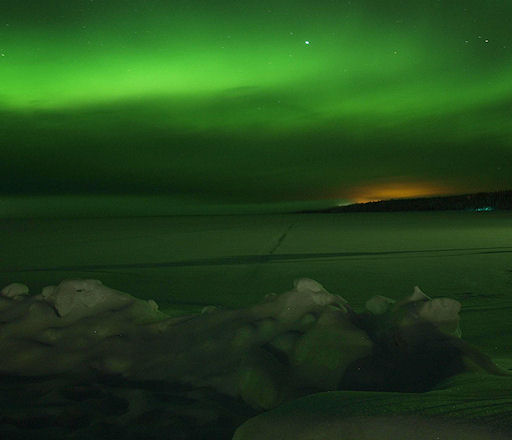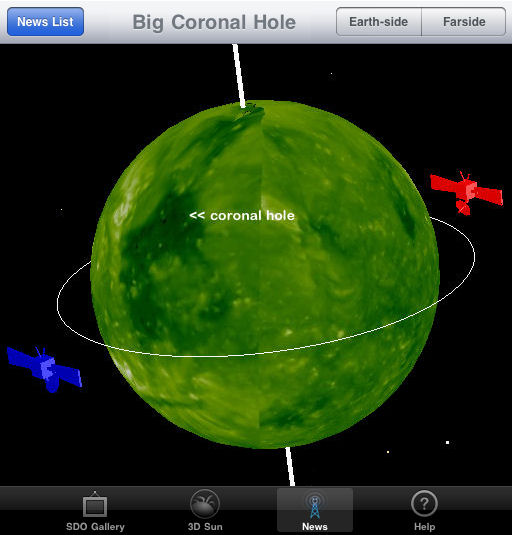Metallic photos of the sun by renowned photographer Greg Piepol bring together the best of art and science. Buy one or a whole set. They make a stellar gift. | | | DEPARTING SUNSPOTS: The northwestern limb of the sun is hopping as twin sunspots 1147-1149 approach the horizon. Reader with solar telescopes are encouraged to monitor the region. They might see something like this. GREEN SNOW: "Last night (Jan. 25th) was amazing. It was the first time in my life I have seen auroras so bright and clear," reports Bjarki Mikkelsen from a little Arctic village in northern Sweden. The display was so intense, even the snow turned green: 
"I also thought I could hear a strange sound coming from the Northern Lights," he adds. "I've decided to stay here to get another chance to experience this again." Another chance is in the offing. A coronal hole in the sun's eastern hemisphere is spewing a stream of solar wind, due to hit Earth about a week from now. High-latitude sky watchers should be alert for auroras on Feb 1st or 2nd. January 2011 Aurora Photo Gallery
[previous Januaries: 2010, 2009, 2008, 2007, 2005, 2004] 3D CORONAL HOLE: Spin it, zoom it, dive right into it. Using NASA's 3D Sun app, you can not only view features anywhere on the sun, but also interact with them. Here is a screenshot of today's big eastern coronal hole: 
Cartoon spacecraft in the image mark the locations of NASA's twin STEREO probes. Stationed on nearly-opposite sides of the sun, STEREO-A and -B can see 98% of the stellar surface. The two probes beam their green extreme ultraviolet images to Earth--and right into your iPhone or iPad. The sun you spin is the realtime sun! Download it now. (It's free.)
Solar Eclipse Photo Gallery
[NASA: Hinode Observes Annular Solar Eclipse] Potentially Hazardous Asteroids ( PHAs) are space rocks larger than approximately 100m that can come closer to Earth than 0.05 AU. None of the known PHAs is on a collision course with our planet, although astronomers are finding new ones all the time. On January 26, 2011 there were 1184 potentially hazardous asteroids. Notes: LD means "Lunar Distance." 1 LD = 384,401 km, the distance between Earth and the Moon. 1 LD also equals 0.00256 AU. MAG is the visual magnitude of the asteroid on the date of closest approach. | | The official U.S. government space weather bureau | | | The first place to look for information about sundogs, pillars, rainbows and related phenomena. | | | Researchers call it a "Hubble for the sun." SDO is the most advanced solar observatory ever. | | | 3D views of the sun from NASA's Solar and Terrestrial Relations Observatory | | | Realtime and archival images of the Sun from SOHO. | | | from the NOAA Space Environment Center | | | the underlying science of space weather | | 
